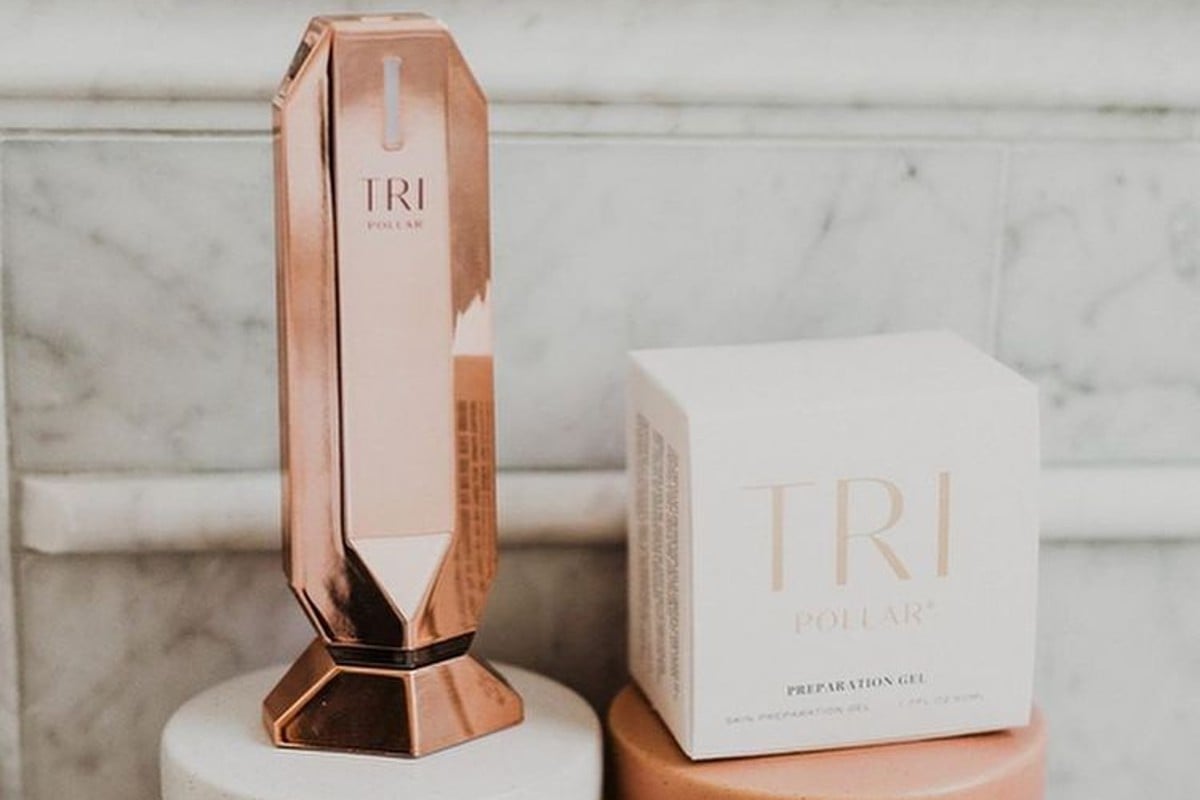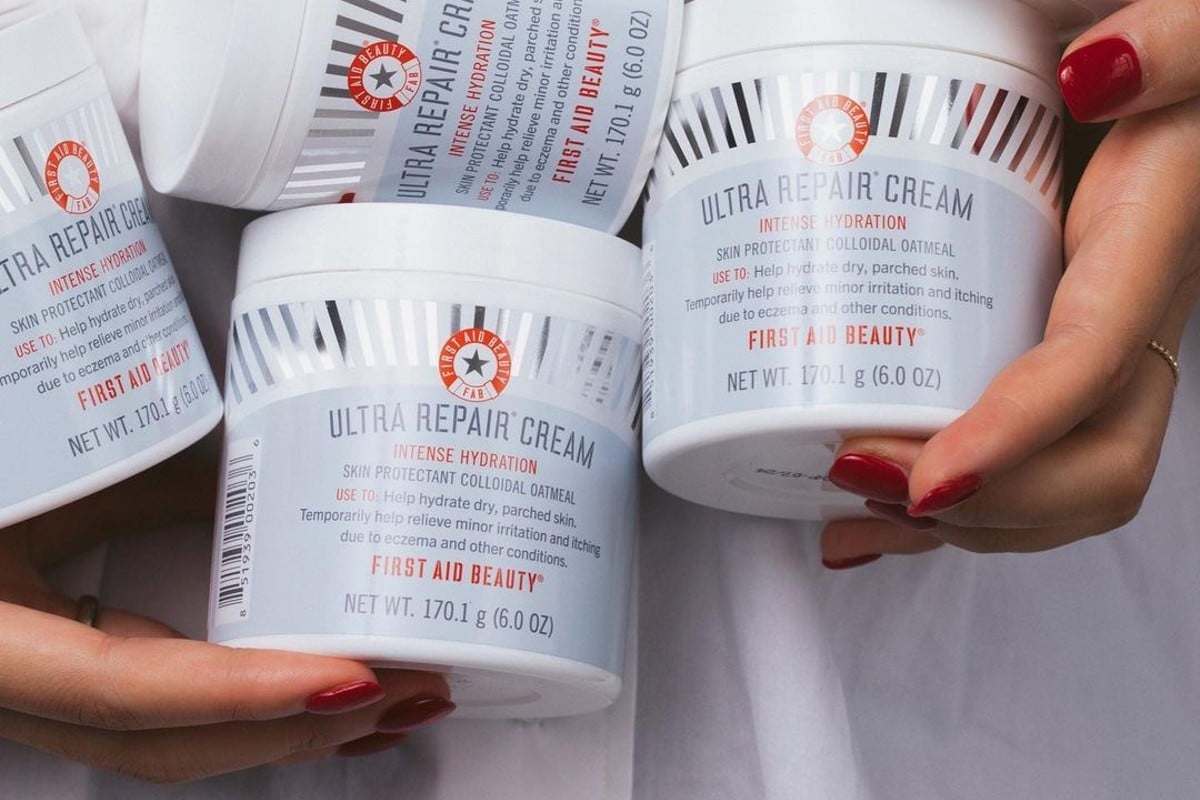You probably think that retinol and sensitive skin have an exclusionary relationship, like a ‘you can’t sit with us’ scenario. Although retinol isn’t one of the most easygoing ingredients, with a few tweaks here and there, you can easily integrate it into your routine and reap the rewards even if your skin falls under the easily reactive category.
Ahead, we provide you with expert insights on how to use retinol on sensitive skin. From how to prepare your delicate complexion to aftercare and what to avoid while you’re on a retinol regimen, the devil is in the details when it comes to mastering retinol without experiencing burns.
Why sensitive skin has a harder time tolerating retinol
Retinol has a track record of inducing irritation in sensitive skin. That’s happening because retinol accelerates the turnover of skin cells at a too fast pace. Why is this an issue? Well, these cells that retinol sheds to pave the way for fresher ones contain lipids that make up the skin’s outermost layer, which serves as a protective barrier. The lag time before the new cells grow and build the necessary lipids for protection can leave the skin vulnerable. For someone with a sensitive complexion whose lipid barrier is already compromised, this process can be more challenging to handle.
So is retinol suitable for sensitive skin?
Unquestionably, it is. Retinol has all those juicy anti-aging and restorative benefits that very few ingredients can rival, so it would be a total shame not to use it. The nuance, however, lies in how you use retinol, as doing it wrong can work against your sensitive skin.
Surprisingly, according to a recent study published in the Journal of Drugs in Dermatology, long-term use of retinol can reduce skin sensitivity by thickening the skin and strengthening the protective function of the epidermis. Retinol also plays a role in reducing transepidermal water loss (TEWL) and protecting collagen from degradation.[1] It even inhibits the activity of some enzymes that break down essential skin components, therefore helping maintain the skin’s structure and function.[2]
That being said, not all hope is lost for people with sensitive skin who wish to join the retinol club. With proper precautions, you can navigate the retinol journey successfully. Gradual introduction, starting with lower concentrations and frequency, allows the skin to acclimate to the active ingredient more gently. Additionally, pairing retinol with soothing, hydrating ingredients and moisturizers specially formulated for sensitive skin can help mitigate potential adverse reactions.
How to use retinol on sensitive skin
Just abide by these steps and you can safely navigate the use of retinol.
Start slowly
Begin by using retinol once a week and monitor your skin’s reaction. If there is no irritation, gradually increase the frequency to twice a week with retinol-free days in between. After a few weeks, you can work up to using it every other day. This gradual approach allows your sensitive skin to acclimate to the retinol and can reduce the risk of irritation.
Pay attention to percentages
Remember, gentle and steady progress is key when it comes to introducing retinol to your sensitive skin. Hence, it’s best to start using retinol in the lowest concentration (0.01% to 0.03%). Lower percentages are gentler and are often recommended for sensitive-skinned people. It’s not necessary to constantly increase the percentage of retinol; consistent use of a low-strength product can still yield results, albeit at a slower pace. If you wish, you can gradually move up to more potent formulas. Retinol ranging from 0.1% to 0.5% is typically well tolerated by sensitive skin that has already acclimated to lower concentrations. You can use these retinol creams for beginners to build your skin tolerance.
Be mindful of the amount
Use a pea-sized amount of retinol for the entire face. Applying more than that doesn’t provide added benefits and can potentially lead to increased irritation. To ensure proper dosing, split the pea-sized amount into quarters and apply each portion to a different quadrant of your face. If a tissue sticks to your face after pressing it, you’ve used too much product.
Choose retinol formulations for sensitive skin
Look for retinol products that incorporate soothing and hydrating ingredients, such as aloe vera or ceramides, that make the formula work more gently on the skin.
Micro-encapsulated retinol formulas are also a hit for problematic complexions. These formulations encapsulate retinol molecules to slowly release them into the skin to reduce the chances of flare-ups. They also help stabilize the retinol and prolong its effectiveness. Versed Press Restart Gentle Retinol Serum is a great option to consider.
Prep your skin
When using retinol, steer clear of sensitizing ingredients, such as chemical exfoliants, benzoyl peroxide, cleansers with sulfates and alcohol, or astringent toners. Instead, to ensure that your skin is sufficiently strengthened, introduce skin-replenishing products into your routine one or two weeks before starting your retinol journey.
Polysaccharides were shown to maintain skin hydration during retinol use, so look out for products containing hyaluronic acid and red and brown algae.[3] Additionally, you can add a niacinamide serum or ceramide cream to your routine, as they’ve been found to reduce water loss and reverse retinol drying effects due to their ability to support the barrier function.[4] Glucosamine, trehalose, ectoin, and omega fatty acids have also been shown to reduce irritation associated with retinol.[5]
Layer with moisturizer
Buffer your retinol by applying a moisturizer first. By moisturizing the skin beforehand, the moisturizer acts as a buffer, diluting the potency of retinol and allowing for a more gradual absorption by the skin.
Consider using moisturizers that contain hydrating and barrier-restoring ingredients like hyaluronic acid, fatty acids, probiotics, and ceramides. Here are what moisturizers we recommend to use with retinol.
For optimal results, wait a few minutes after applying moisturizer before following up with your retinol product. This allows the moisturizer to fully absorb into the skin. You want to layer them, not mix them.
Use on dry skin
Applying your retinol on damp skin is more likely to trigger reactions. This is because damp skin has higher permeability than dry skin, meaning active ingredients, such as retinol, penetrate more deeply and rapidly.
For this reason, you should apply retinol on completely dry skin, which allows for a more controlled and gradual delivery of the retinol.
Listen to your skin
Pay attention to how your skin reacts and adjust your retinol usage accordingly. If you experience persistent redness, excessive dryness, or discomfort, reduce the frequency or concentration of retinol and consult a dermatologist for personalized advice.
The takeaway
Using retinol on sensitive skin is all about having a gentle and gradual mindset to allow your skin to acclimate over time. Keep in mind that retinol makes the skin photosensitive, so prioritize daily SPF.
If, after all your efforts, your sensitive skin can’t tolerate retinol even if you passed the accommodation period (usually 2 to 4 weeks), it might simply be not for you. This is totally fine—there’s no such universal ingredient that works for everyone. You can always try gentler retinol alternatives like bakuchiol, retinol esters, peptides, or rosehip oil. They can help rejuvenate your skin, diminish fine lines, and improve overall skin texture, just like retinol but without harshness. And if you want to address acne-prone skin, azelaic acid and vitamin C might be better options.
Read Next: The Reasons Your Skin Is Sensitive All Of A Sudden
References
Women’s Concepts uses reliable sources, including dermatologists’ insights, clinical trials, and scientific journals, to find accurate information and support all the facts shared in our articles. All statements and claims have clear and legit references. Read our editorial policy to learn more about our sources of information, our process of researching and fact-checking the content, and how our team strives to keep all articles updated, completed, and trustworthy.
- Zasada M, Budzisz E. Retinoids: active molecules influencing skin structure formation in cosmetic and dermatological treatments. Postepy Dermatol Alergol. 2019 Aug;36(4):392-397.
- Frankenberger, M., Hauck, R.W., Frankenberger, B. et al. All Trans-Retinoic Acid Selectively Down-Regulates Matrix Metalloproteinase-9 (MMP-9) and Up-Regulates Tissue Inhibitor of Metalloproteinase-1 (TIMP-1) in Human Bronchoalveolar Lavage Cells.
- Gruber, J.V.; Stojkoska, V.; Riemer, J. Retinol Has a Skin Dehydrating Effect That Can Be Improved by a Mixture of Water-Soluble Polysaccharides. Cosmetics 2020, 7, 80. https://doi.org/10.3390/cosmetics704008
- Xiuzu Song, Aie xu, Wei Pan, Brittany Wallin, Rebecca Kivlin, Shan Lu, Cong Cao, Zhigang Bi, Yinsheng Wan, Nicotinamide attenuates aquaporin 3 overexpression induced by retinoic acid through inhibition of EGFR/ERK in cultured human skin keratinocytes, August 1, 2008 https://doi.org/10.3892/ijmm_00000013
- Kang, Seongsu & Kim, Kyunghoe & Jun (2021). Anti-Irritant Strategy against Retinol Based on the Genetic Analysis of Korean Population: A Genetically Guided Top–Down Approach





